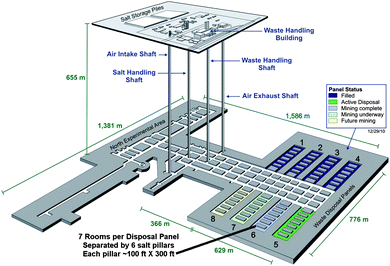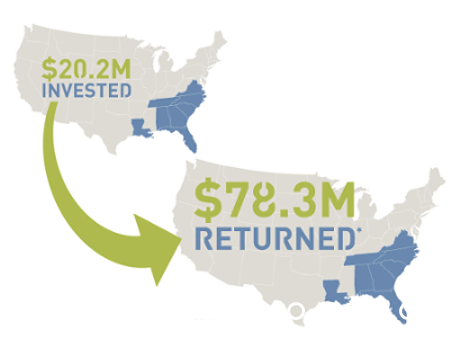Nuclear Power
A piece of metal from a broken impeller blade, 5 inches by 12 inches long, has become wedged inside the Palisades reactor’s pressure vessel and workers have been unable to remove it. Palisades’ owner Entergy Corp. says it wants to just leave the piece where it is, but the NRC says it is evaluating the safety significance of the problem and won’t allow restart of the reactor until the evaluation is complete. Palisades, one of the more decrepit reactors in the country, has been shut down 10 times since 2011 for various repairs. The article also includes some interesting anecdotes from UCS’ Dave Lochbaum about some past cases where pieces of metal have accidentally entered reactor pressure vessels.
The NRC has its own version of the children’s game Mother May I? According to Dave Lochbaum of UCS it’s called NRC May I, and it’s where reactor owners modify reactors or procedures without first obtaining NRC permission. Lochbaum explains how the process works, which is under 10 CFR 50.59, and calls the large number of violations of the process in recent years “troubling.”
“Unacceptable” parts were supplied to at least seven U.S. nuclear reactors. Dresser Rand, which manufactured the parts, said one of its vendors provided the unacceptable materials to the company, which then used them to build the parts. The company discovered the problem after the parts were delivered and reported it to the reactor sites involved. It’s unclear whether the parts are in use at any of the reactors; two say they are not in use.

A concise, useful explanation of the problems at New Mexico’s WIPP (Waste Isolation Pilot Project) transuranic radioactive waste site from Idaho’s Snake River Alliance.
Yesterday we reported that Russian aggression toward Ukraine is threatening a Finnish nuclear project partly owned by Russia’s Rosatom. Today it’s the Czech Republic’s turn: two government ministers say Russia’s actions make Russia’s government-owned Atomstroyexport unfit to participate in building new reactors there–yet another obstacle toward building the reactors which already has been threatened by the government’s unwillingness to provide taxpayer subsidies for the project.
From the Ecologist: UK taxpayers will be liable for billions if the Hinkley Point reactor project proceeds–when alternatives would be cheaper. Meanwhile, the Guardian asks, “Where next for the UK nuclear industry” as part of its Great Energy Debate series.
Democracy bulldozed to clear way for nuclear industry: villagers in India protest against farcical public hearing. Thousands of Indians are protesting various nuclear projects on a near-daily basis, but the government keeps acting to repress them.
Clean Energy
Tesla’s endgame: Why electric vehicles are just the beginning. The company’s real aim is complete transformation of electric utilities. The battery factory Tesla is building seeks to reduce the cost of batteries by 50% by 2020, and eventually down by 75%. At that level, rooftop solar coupled with battery storage will make economic sense everywhere–indeed, not just economic sense but a level where it would be folly not to do that. And that spells the death knell for traditional utilities. As the article from Utility Dive states, “The overarching purpose of Tesla Motors (and the reason I am funding the company),” Musk wrote in The Secret Tesla Motors Master Plan (just between you and me), “is to help expedite the move from a mine-and-burn hydrocarbon economy towards a solar electric economy.” Tesla isn’t the only company working towards a renewable-powered future, but it may be both the most visionary and the most aggressive.
 A new report from the Southeast Energy Efficiency Alliance (SEEA) shows that energy efficiency retrofits done in 16 cities across eight southern states yielded an astounding 387% return on investment. The program spurred $3.87 million in economic input and 17.28 new jobs for every $1 million invested, according to SEEA, and likely will lead to more programs in the region, which historically has lagged behind the rest of the country in efficiency. Florida–one of the worst of the worst when it comes to energy efficiency–received the greatest proportional benefits.
A new report from the Southeast Energy Efficiency Alliance (SEEA) shows that energy efficiency retrofits done in 16 cities across eight southern states yielded an astounding 387% return on investment. The program spurred $3.87 million in economic input and 17.28 new jobs for every $1 million invested, according to SEEA, and likely will lead to more programs in the region, which historically has lagged behind the rest of the country in efficiency. Florida–one of the worst of the worst when it comes to energy efficiency–received the greatest proportional benefits.
Austin, Texas has signed an agreement for new wind power that will allow it to reach its goal of 35% renewable energy by 2020 four years ahead of schedule (when was the last time anyone heard of a nuclear project “ahead of schedule?). By reaching its general renewable energy goal early, Austin will now concentrate on meeting its goal of 200MW of solar power by 2020–half of that locally generated.
Michael Mariotte
Permalink: https://www.nirs.org/2014/03/04/nuclear-newsreel-tuesday-march-4-2014/
Comments are welcome! Say your piece above. Start a discussion. Don’t be shy; this blog is for you.
If you like GreenWorld, you can help us reach more people. Just use the icons below to “like” our posts and to share them on the various social networking sites you use. And if you don’t like GreenWorld, please let us know that too. Send an e-mail with your comments/complaints/compliments to nirs@nirs.org. Thank you!
Note: If you’d like to receive GreenWorld via e-mail daily, send your name and e-mail address to nirs@nirs.org and we’ll send you an invitation. Note that the invitation will come from a GreenWorld@wordpress.com address and not a nirs.org address, so watch for it.




DING DONG THE MOX IS (ALMOST) DEAD!!!